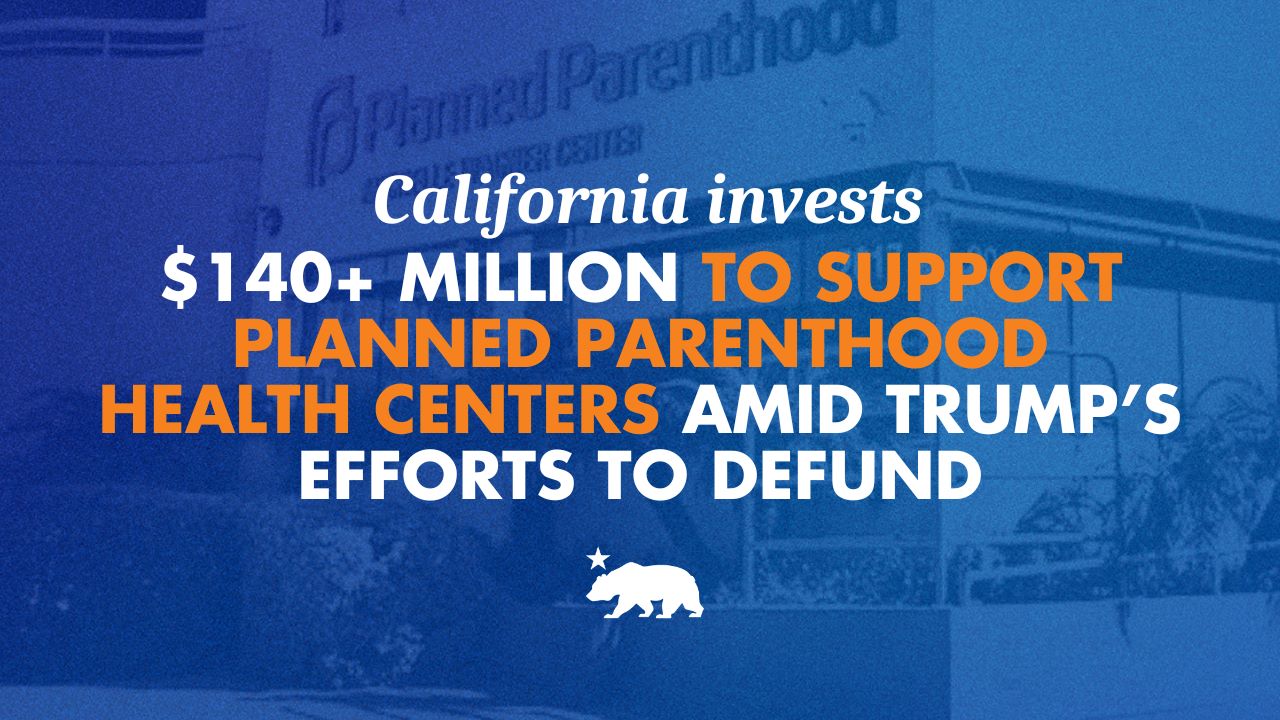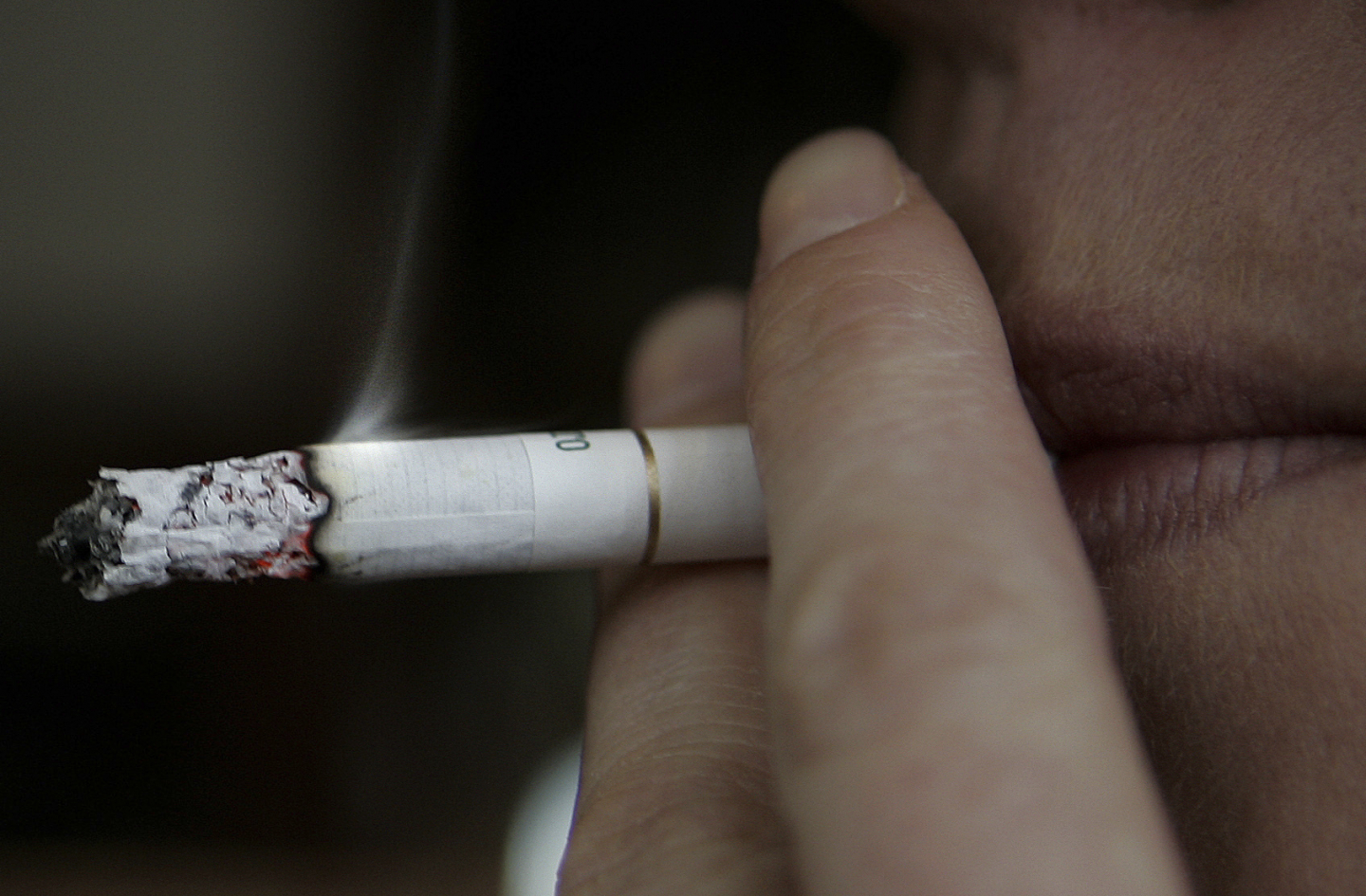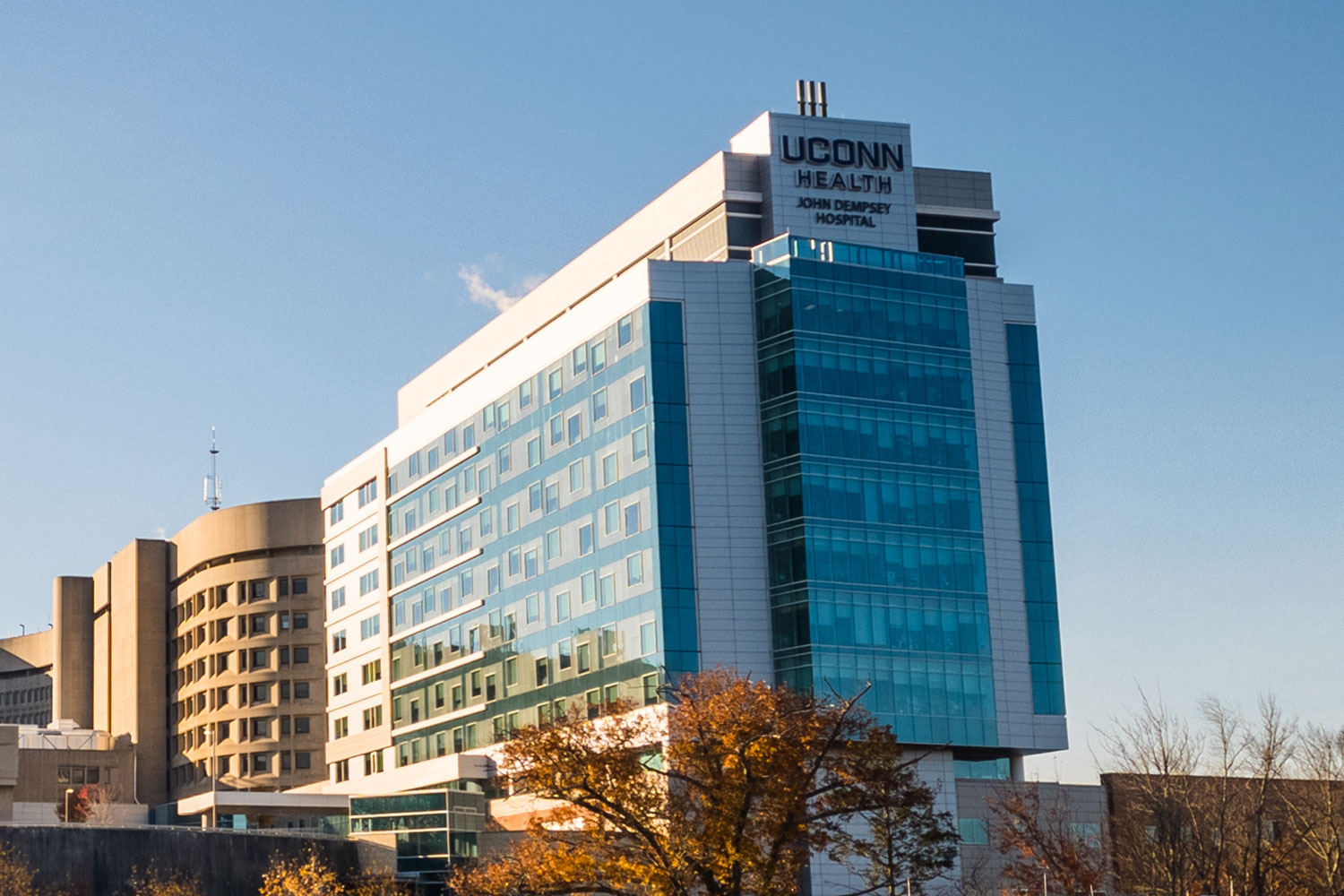Report on California’s Investment in Healthcare Infrastructure to Advance Sustainable Development Goals
Executive Summary
On October 23, 2025, the State of California announced a state investment exceeding $140 million to support Planned Parenthood health centers. This funding is a direct response to the withdrawal of federal funding and is intended to ensure the continuity of essential healthcare services for millions of residents. This initiative demonstrates a significant commitment to achieving several United Nations Sustainable Development Goals (SDGs), particularly SDG 3 (Good Health and Well-being), SDG 5 (Gender Equality), and SDG 10 (Reduced Inequalities).
Alignment with SDG 3: Good Health and Well-being
The investment directly supports SDG Target 3.7, which aims to ensure universal access to sexual and reproductive health-care services. By providing critical funding, California ensures that over 100 Planned Parenthood health centers can continue to operate, providing more than one million patient visits annually. This action safeguards access to essential health services, which is a cornerstone of promoting good health and well-being for all citizens.
- Ensures continuity of care for existing patients.
- Maintains access points for life-saving care and treatment.
- Supports the provision of basic and preventative health care services.
- Mitigates public health risks associated with disruptions in healthcare access.
Upholding SDG 5: Gender Equality
Access to comprehensive reproductive healthcare is fundamental to achieving gender equality, as outlined in SDG Target 5.6. The state’s financial commitment is a direct measure to protect reproductive freedom and empower individuals, particularly women, to make informed decisions about their health. By counteracting federal defunding efforts, California reinforces its policy of supporting institutions that are critical for advancing gender equality and the well-being of women and families.
Addressing SDG 10: Reduced Inequalities
The withdrawal of federal funding disproportionately affects vulnerable and marginalized communities, exacerbating existing health and economic disparities. California’s investment serves as a crucial intervention to promote SDG 10 (Reduced Inequalities) by ensuring that access to essential healthcare is not diminished for these populations. This state-level action aims to reduce inequalities of outcome and ensure that all Californians, regardless of socioeconomic status, have access to necessary health services.
Chronology of Actions Supporting SDG 16: Peace, Justice, and Strong Institutions
California has established a robust legal and institutional framework to protect reproductive rights, aligning with SDG 16’s call for effective, accountable, and inclusive institutions. The state’s consistent legislative and executive actions demonstrate a commitment to upholding justice and non-discriminatory policies. A timeline of these actions is as follows:
- June 2022: Following the overturning of Roe v. Wade, California invested over $200 million in reproductive health care, protected patient and provider data through an Executive Order, and formed a multi-state commitment to defend access.
- September 2022: The state launched Abortion.CA.Gov and passed the largest reproductive freedom bill package in its history.
- November 2022: Voters passed Proposition 1, enshrining the right to reproductive freedom in the state constitution.
- February 2023: Governor Newsom launched the Reproductive Freedom Alliance, a coalition of 23 governors.
- April 2023: The state procured an emergency stockpile of Misoprostol to ensure access to medication abortion.
- January 2024: The Reproductive Freedom Alliance filed an amicus brief with the U.S. Supreme Court to protect FDA authority over abortion medication.
- May 2024: Legislation was signed to allow Arizona abortion providers to temporarily offer care in California.
- September 2025: Landmark legislation was signed to further safeguard access and protect patient and provider privacy.
Analysis of Sustainable Development Goals in the Article
1. Which SDGs are addressed or connected to the issues highlighted in the article?
The article discusses issues that are directly and indirectly connected to several Sustainable Development Goals (SDGs). The primary focus on healthcare access, reproductive rights, and government action links the content to the following SDGs:
- SDG 3: Good Health and Well-being: The core of the article is about ensuring continued access to “critical health care centers,” “life-saving care and treatment,” and “basic health care needs.” It specifically mentions reproductive and sexual health services, which is a key component of this goal.
- SDG 5: Gender Equality: The article frames the issue as a defense of “women’s reproductive freedom” and a response to a “war on women and their rights.” By funding services like abortion care and contraception, the actions described aim to empower women and ensure they have control over their own health and lives, which is fundamental to gender equality.
- SDG 10: Reduced Inequalities: The funding is presented as “critical to protecting vulnerable Californians.” This implies that without state intervention, the federal defunding would disproportionately affect lower-income individuals and vulnerable communities, thereby increasing health and social inequalities. The state’s actions aim to ensure equal access to essential services regardless of federal policy.
- SDG 16: Peace, Justice and Strong Institutions: The article details a conflict between federal and state government policies. It highlights how California’s state institutions (the Governor’s office, the Legislature) are taking legislative and financial action to counteract federal policies, protect what it considers a constitutional right, and ensure the rule of law and access to justice for its citizens. The formation of the “Reproductive Freedom Alliance” also demonstrates institutional collaboration to uphold these principles.
2. What specific targets under those SDGs can be identified based on the article’s content?
Based on the specific actions and services mentioned in the article, the following SDG targets can be identified:
-
Under SDG 3 (Good Health and Well-being):
- Target 3.7: “By 2030, ensure universal access to sexual and reproductive health-care services, including for family planning, information and education, and the integration of reproductive health into national strategies and programmes.” The article directly addresses this by discussing funding to ensure access to “abortion care and contraception, along with sexual and reproductive healthcare.” The launch of Abortion.CA.Gov also supports the “information and education” aspect of this target.
- Target 3.8: “Achieve universal health coverage, including financial risk protection, access to quality essential health-care services and access to safe, effective, quality and affordable essential medicines…” The state’s investment of over $140 million is a direct measure to provide financial risk protection and ensure access to essential healthcare. The procurement of an “emergency stockpile of Misoprostol” and legal actions to protect access to “mifepristone” directly relate to ensuring access to essential medicines.
-
Under SDG 5 (Gender Equality):
- Target 5.6: “Ensure universal access to sexual and reproductive health and reproductive rights…” The entire article is centered on this target. Phrases like “protecting vulnerable Californians’ constitutional right to access reproductive health care,” “fight for women’s reproductive freedom,” and the passage of Proposition 1 to “enshrine the right to reproductive freedom” in the state constitution are direct actions toward achieving this target.
-
Under SDG 10 (Reduced Inequalities):
- Target 10.3: “Ensure equal opportunity and reduce inequalities of outcome, including by eliminating discriminatory laws, policies and practices and promoting appropriate legislation, policies and action in this regard.” California’s actions are explicitly a response to federal policies and court rulings that the state government views as discriminatory and creating unequal access to healthcare. The state is promoting and passing its own legislation (e.g., AB 260, AB 1525, SB 233) to ensure equal opportunity for its residents to access care.
-
Under SDG 16 (Peace, Justice and Strong Institutions):
- Target 16.B: “Promote and enforce non-discriminatory laws and policies for sustainable development.” The article provides a long list of actions where California is actively creating, promoting, and enforcing its own non-discriminatory laws and policies (like the “largest reproductive freedom bill package”) in direct opposition to what it perceives as discriminatory actions at the federal level.
3. Are there any indicators mentioned or implied in the article that can be used to measure progress towards the identified targets?
Yes, the article contains several quantitative and qualitative indicators that can be used to measure progress:
- Financial Investment: The “investments of over $140 million in state funding” is a direct financial indicator of the government’s commitment to supporting essential health services (relevant to Target 3.8). The article also mentions a previous investment of “over $200 million in reproductive health care” in June 2022.
- Service Provision and Reach: The article states that Planned Parenthood operates “more than 100 health centers” and provides “more than a million patient visits a year.” These figures serve as baseline indicators for the scale of healthcare service delivery that the funding aims to maintain (relevant to Target 3.7).
- Legislative and Policy Actions: The number and scope of laws passed are key indicators of progress. The article lists specific legislation, such as “AB 260,” “AB 1525,” “SB 233,” and the passage of “Proposition 1” to amend the state constitution. This demonstrates a legal framework being built to protect rights (relevant to Targets 5.6, 10.3, and 16.B).
- Institutional Collaboration: The formation and growth of the “Reproductive Freedom Alliance,” a coalition of “23 Governors,” is an indicator of institutional strength and inter-state cooperation to protect and advance reproductive freedom (relevant to Target 16.B).
- Access to Essential Medicines: The action of procuring an “emergency stockpile of Misoprostol” is a tangible indicator of the state’s effort to ensure the availability of essential medicines, independent of potential supply chain or political disruptions (relevant to Target 3.8).
4. Summary Table of SDGs, Targets, and Indicators
| SDGs | Targets | Indicators |
|---|---|---|
| SDG 3: Good Health and Well-being |
3.7: Ensure universal access to sexual and reproductive health-care services.
3.8: Achieve universal health coverage, including access to essential health-care services and affordable essential medicines. |
– Number of health centers providing services (“more than 100 health centers”). – Number of annual patient visits (“more than a million patient visits a year”). – Amount of state funding allocated to health centers (“over $140 million”). – Creation of an emergency stockpile of essential medicines (“emergency stockpile of Misoprostol”). |
| SDG 5: Gender Equality | 5.6: Ensure universal access to sexual and reproductive health and reproductive rights. |
– Enshrinement of reproductive freedom in the state constitution (“Proposition 1”). – Number of laws passed to protect and expand access to reproductive care (e.g., AB 260, AB 1525). |
| SDG 10: Reduced Inequalities | 10.3: Ensure equal opportunity and reduce inequalities of outcome by promoting appropriate legislation and policies. |
– State funding provided to counteract federal defunding that would disproportionately affect “vulnerable Californians.” – Legislation passed to protect patients and providers from out-of-state laws (e.g., SB 233 for Arizona providers). |
| SDG 16: Peace, Justice and Strong Institutions | 16.B: Promote and enforce non-discriminatory laws and policies for sustainable development. |
– Passage of a comprehensive “reproductive freedom bill package.” – Establishment of a multi-state coalition to defend access (“Reproductive Freedom Alliance” of 23 Governors). – Issuance of Executive Orders to protect patient and provider data. |
Source: gov.ca.gov







